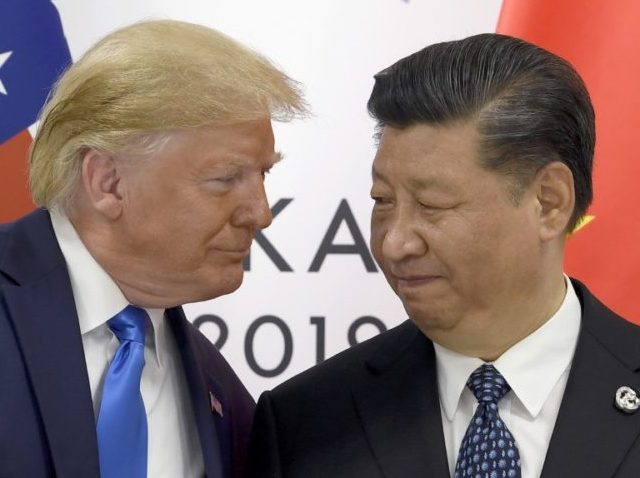A small rise in the trade deficit with China in May masks a much larger shift in U.S. trade away from the world’s second largest national economy.
The U.S. imported $39.3 billion of goods from China in May, up from $34.8 billion in April, according to Commerce Department data released Wednesday. Exports to China rose also, to $9 billion from $7.9, so the trade gap rose by $3.3 billion to $30.2 billion.
The increase in trade came as somewhat of a surprise because U.S. tariffs on $200 billion of Chinese goods jumped from 10 percent to 25 percent on May 10. Concerns that tariffs could be applied to a further $300 billion of imports from China may have prompted a small front-running import surge in those goods.
The most revealing figure in the May data, however, is the annual decline in trade and the trade gap between the U.S. and China. Imports from China in May fell $10.3 billion from a year ago. In the first five months of the year, imports have fallen $24.4 billion to $180.9 billion, almost a 12 percent decline.
This suggests that the trade dispute is hurting China’s sales to the U.S., although it is not clear from the import figures whether that is because the price of goods is falling or because the volume of goods sold is falling. The trade figures do not include the cost of tariffs paid by importers.
The trade gap with China for the first five months of 2019 fell by $15 billion, a 10 percent decline. Exports to China fell by nearly 20 percent, from $53.2 billion to $43 billion. So U.S. producers of U.S. goods exported to China, particularly in agricultural goods, are also being hit by the trade dispute.
But perhaps not by as much as expected. Overall U.S. exports to the rest of the world are down just $500 million year to date. Agricultural commodity exports are down $3 billion year to date, although they were up in by around $200 million from the month before.
The economic damage from the trade war is very specific to China. The U.S. appetite for imported goods has not diminished: total imports are up $8.1 billion year-to-date to $1.04 trillion. But the sources of imports have shifted away from China.
One big beneficiary has been Taiwan. So far this year, imports from Taiwan are up 22 percent to $21.8 billion. And Taiwan’s imports of U.S goods rose by more than 14 percent to $12.8 billion.
Imports from a group of nations grouped as “other countries” in Commerce Department data–including India, Thailand, and Vietnam–rose by $12 billion to $84,6 billion in the first five months of the year compared with 2018. That is evidence to back-up the widespread reports that companies are shifting the sources of their imports out of China and into developing Asian countries.
U.S. policymakers regard that shift out of China and into third countries as a victory for the Trump administration’s policies, both because it makes U.S. consumers and retailers less dependent on goods from China and because it increases the pressure on China to reform what the U.S. says are unfair and illegal trade practices. The shift may also strengthen the U.S. diplomatically by aligning other nation’s economic interests with its trade dispute against China.

COMMENTS
Please let us know if you're having issues with commenting.